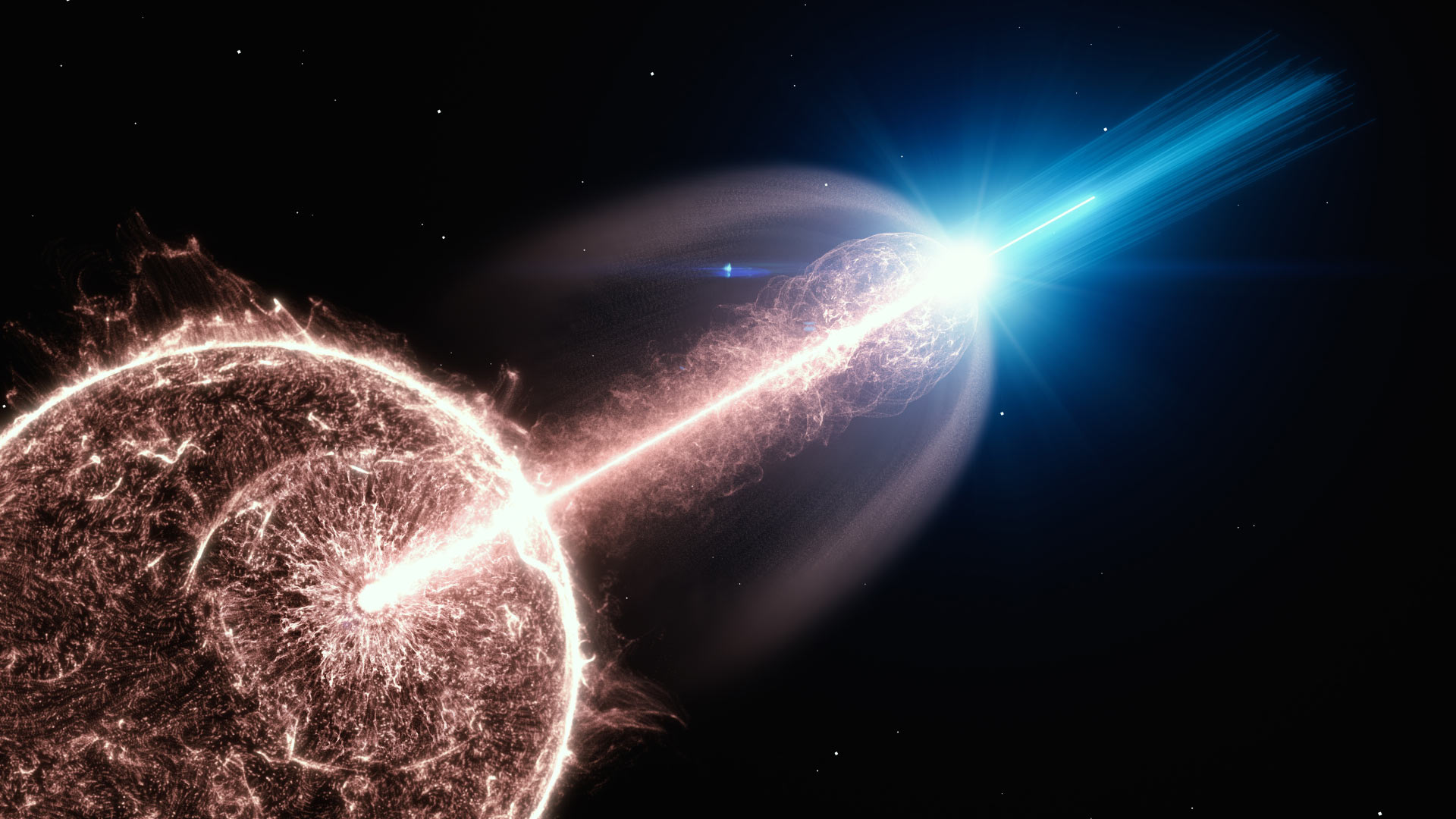
GRBs are well known as some of the most energetic explosions in existence, they are so luminous they out-shine their host galaxies and are observable out to the edges of the visible Universe. They are the result of jets launching during cataclysmic events either massive stellar explosions (long GRBs) or binary neutron star mergers (short GRBs). My research focuses on the studying of the afterglow, produced when the jet runs into the circumburst medium and decelerates producing shocks. Radio observations are vital to differentiate between different shock components within the afterglow. Characterisation of the synchrotron emission allows observers to place constraints on the jet's kinetic energy, geometry and microphysics as well as its surrounding environment.
I am interested in many aspects of GRBs, primarily those with very high energy (>100GeV) counterparts and events that do not fit in the 'standard' paradigm as determined by the community, such as long duration GRBs produced by binary neutron star mergers or the possibility of gamma-ray flashes produced by jetted tidal disruption events.
Some of my first/ co-authored papers
- The radio emission from two of the first very high energy GRBs
- A long GRB masquerading a short GRB
- Nature article on a kilonova from a long GRB
- Discovery of a radio and optical counterpart to an Einstein Probe event
- Nature astronomy article on the early time radio emission from GRB 221009A
- Unprecedented radio coverage of GRB 221009A